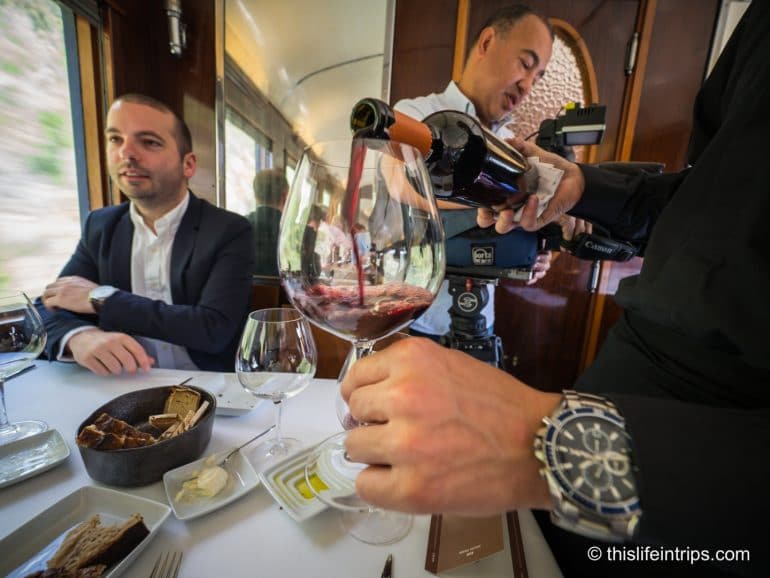Wine tourism, also known as enotourism, is booming lately and has become a sector that intertwines travel with the many pleasures of wine. In 2024, the global wine tourism market was valued at around USD 95.9 billion, with expectations of a robust compound annual growth rate (CAGR) of 12.7%.
The general idea is that it might reach USD 358.6 billion by 2035. How did this expansion come about – well, travellers are enjoying immersive experiences that combine viticulture, gastronomy, and local traditions more and more. .
Among the countries that are leaders in this field you’ll find the usual suspects – Italy, Spain, and France. On top of that, Italy exported over 21.3 million hectoliters in 2023, which certainly didn’t hurt wine tourism. It only makes sense that along with wine many countries thought that it’s a great idea to add more to the experience.
How Wine Tourism Transforms Ordinary Trips into Unforgettable Experiences
The main idea of wine tourism, or enotourism, is to transform ordinary travel into experiences that engage the senses, intellect, and emotions all with a glass of wine in hand, of course. These journeys offer profound connections to the art of winemaking, the cultural heritage of regions, and the natural beauty of vineyards. Below we’ll look into components of what makes wine tourism more than just an experience.
Immersive Cultural Engagement
Wine tourism can and does serve as a foot in the door of understanding the cultural fabric of wine-producing regions. Visitors find themselves in areas where viticulture has been integral to local identity for centuries and have the chance to feel the atmosphere and the tradition.
Let’s look at the example of the Douro Valley in Portugal, known for port wine. Tourism has come back into life in the region, leading to the revitalization of Porto. The city has gone from a quiet locale to a bustling destination, with new bars, restaurants, and wine-related attractions like the World of Wine museum.
Then there are wine themed events and festivals. The Yerevan Wine Days in Armenia celebrate the nation’s winemaking heritage, attracting thousands of visitors. Tourists feel great because they get the chance to engage in local customs, music, and culinary delights, fostering a deeper appreciation for the region’s heritage and ultimately wine toursim.
Educational Insights into Winemaking
Wine tourism can basically cultivate it’s audience by educational experiences that deepen appreciation for viticulture and oenology. Tours often include detailed explanations of grape cultivation, fermentation processes, and aging techniques for various wines.

The Vinologue series offers guides to many wine regions, and travelers gain in-depth knowledge about local winemaking practices. These resources enhance the educational aspect of wine tourism, travellers will get to know more about famous wine regions like Dalmatia, Empordà, and Priorat.
Engaging with winemakers during these tours allows visitors to learn about innovative practices and challenges in the industry. This firsthand knowledge fosters a deeper connection to the wine and the region, enriching the overall travel experience.
Culinary Pairings and Gastronomic Delights
A significant allure of wine tourism lies in the most natural partner of wine – fine cuisine. Many regions have gotten winds of this so they work culinary heritage into their wine offers, which creates a holistic gastronomic experience.
In Mendoza, in Argentina, establishments like SB Winemaker’s House & Spa Suites provide luxurious wellness, along with wine related experiences with relaxation and rejuvenation. Such venues exemplify how wine tourism transcends the limits of just one offer, but rather all of the elements on offer serve to strengthen one another
This fusion of food and wine not only satisfies the palate but also offers insights into local agricultural practices, traditional cooking methods, and the symbiotic relationship between regional cuisines and their accompanying wines.
Connection with Nature and Scenic Landscapes
Since vineyards are usually located in nature, picturesque landscapes are pretty much a given for any wine tour. As we’ve discussed before, one element of offer servers to bolster another and it’s the same thing with nature.
The Santa Ynez Valley in Central California, for instance, attracts tourists not only for its remarkable wines but also for its stunning beauty and outdoor activities. Visitors can engage in biking, hiking, and exploring the area’s cultural elements, along with very fine wines.
This connection is the future of touring, a serene and picturesque backdrop along wine tasting will embody the future tendencies of tourism. The tranquility of vineyards will prove to be vital in the future since everyone will want to have tourism disconnected from the digital world.
Wellness and Personal Enrichment

Exploring the historical roots of viticulture very often entails exploring history in general. Wine tourism offers travelers a rich tapestry of cultural and historical experiences in locations that, quite literally, live and breathe wine culture and history.
Take Cyprus for example, the ancient wine Commandaria, dating back nearly 3,000 years, is undergoing a revival through local micro-wineries like Revecca, allowing visitors to taste a great vintage and slice of history.
Hungary’s Tokaj region, recognized as a UNESCO World Heritage Site, is famed for producing Tokaji aszú, the world’s oldest botrytized wine. Local vineyards date back to at least 1067. You read that right, at least.
In Austria, the Wachau Valley, another UNESCO site, not only offers high-quality wines but also showcases ancient monasteries and castles, providing a scenic journey through time along the Danube River.
Endnote
As tourism continues to evolve, wine tourism must adapt to meet the changing expectations of travelers. The future promises even more immersive and innovative experiences, where technology, sustainability, and personalization play key roles. From vineyard stays and hands-on winemaking workshops to AI-powered tasting recommendations and virtual vineyard tours, the industry is expanding beyond traditional wine tastings.
Pairing wine with local cuisine, music, art, and even wellness retreats is becoming increasingly popular, turning a simple visit into a multi-sensory journey. Travelers seek not just great wine but a deeper connection to the land, the people, and the culture behind each bottle.
Wine tourism is no longer just about sipping a glass at a tasting room—it’s about engaging all the senses, creating lasting memories, and leaving with a story to tell.
What say you?
Thoughts on Wine Tourism?
Let’s hear it!








